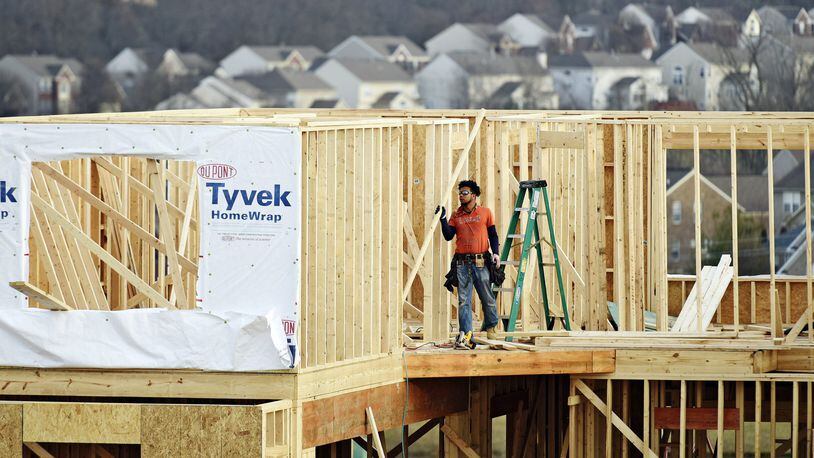RELATED: How can Butler County’s state-leading job growth continue?
Dan Dressman, executive director for the Home Builders Association of Greater Cincinnati, said new home starts have gone a little soft recently in Butler County but it isn’t because the area is unattractive to builders.
“The issue we’re running into all across the region, not just in Butler County, is just the availability of buildable lots, there aren’t a whole lot of new communities going online right now, so we’re behind the curve as far as sites available and lots available for new home builds,” Dressman said. “That is combined with unavailability of skilled labor enough to meet the demands has slowed down the process significantly.”
New home permits are the most common barometer for whether an area is in growth-mode, but commercial permits are also telling according to West Chester Community Development Director Aaron Wiegand. The new NorthPoint industrial development — there are no identified end-users yet — is a prime example of the confidence developers have in this area.
“They are building it as speculative and we’ve always stated that that speculative is really one of the biggest indicators you can get of strength of market,” Wiegand said. “Because it’s private money being put into your market with the idea there is so much growth happening they want to be ahead of it.”
The $75 million light industrial/office park development — West Chester Trade Center — will be the work of Missouri-based NorthPoint Development and bring approximately 1.8 million-square feet of space to more than 100 acres along Ohio 747 and Union Centre Boulevard.
“We see speculative construction as a real world, private business justification of our thoughts,” Wiegand said.
Liberty Twp. is about 83 percent residential but officials there are making a concerted effort to entice more commercial building. Township Board President Tom Farrell said they need commercial to support services for their residents. He said for every dollar of services a resident “spends” it costs the township $1.50 but the reverse is true for commercial.
“If we are 83 percent residential we have to focus on our residents. One of the ways we are focusing on our residents is making sure we relieve them of the tax burden that residential carries, by making sure we have responsible commercial growth,” Farrell said. “If we don’t have the right mix of responsible, sustainable growth then the tax burden falls on the residents.”
MORE: 6 major projects that are expected to see progress in 2018
The cities are growing too, but none faster than Monroe. The city saw the largest overall growth between 2010 and 2016 with just more than 0.08 percent as it grew from 12,442 to 13,473 or an increase of 1,031 residents since the 2010 Census.
Like the townships and other cities in the county Monroe welcomes commercial growth and has seen its share of major industrial developments come into town, like the Amazon fulfillment center.
Amazon is working to open at the Park North at Monroe industrial park a fourth Ohio fulfillment center that will create more than 1,000 jobs in the city. The nearly 1.4 million-square-foot facility near I- 75 will house employees who will pick, pack and ship larger customer orders.
City Manager Bill Brock said while the big job-creating developments like Amazon are wonderful — they bring income tax to the city and other benefits — right now they are working to get more smaller scale commercial developments to serve the needs of their residents and employees who work in the city.
“The commercial development is important in that we need to support both daytime and nighttime populations,” Brock said. “That commercial piece of it has seemed to lag behind the residential growth and the industrial growth… We’ve been analyzing our daytime population to see how that’s going to effect commercial growth in the future.”
About the Author
